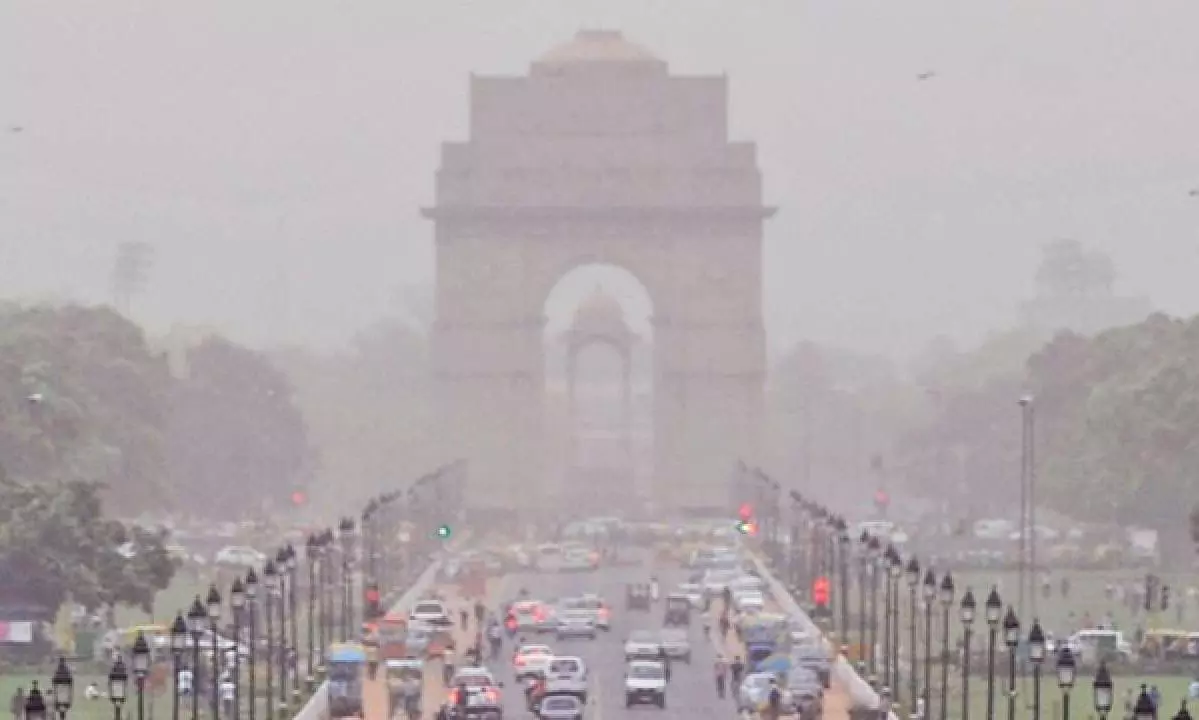
Delhi's air quality plummets to 'very poor,' residents express concern
text_fieldsDelhi’s air quality took a steep dive on Sunday, with the Air Quality Index (AQI) hitting 352, categorized as 'very poor,' according to data from the System of Air Quality and Weather Forecasting and Research (SAFAR).
The latest readings mark a significant increase in pollution, worsening from Saturday's AQI of 255, which fell into the 'poor' range.
Particularly alarming was the AQI in Anand Vihar, recorded at 405, indicating a 'severe' pollution level, an uptick from 367 the previous day.
The air around key locations, such as the Akshardham Temple (AQI 261) and IGI Airport (AQI 324), also remained in the 'very poor' category. In parts of the city, a thick blanket of smog reduced visibility and heightened the sense of discomfort among residents. Visitors and locals alike reported difficulties breathing; Himanshu, a visitor to Delhi, described the experience as "suffocating," reported ANI.
The deteriorating air quality has significantly affected daily activities, as cyclists and outdoor exercise groups have reported respiratory difficulties and increased fatigue. "We cycle daily here, but in the past few days, the pollution has made breathing challenging and made us tire out faster," said one cyclist. He added that while wearing masks and bandanas provides some protection, it’s insufficient against the mounting pollution levels. He also suggested that the government could make more efforts to encourage public transport and carpooling, as measures like construction halt and the odd-even traffic rule have had limited success.
The Delhi government, meanwhile, has enacted a ban on firecrackers until January 1 as a precautionary measure ahead of Diwali, a time when air pollution traditionally spikes.
Despite these actions, the toxic foam along the Yamuna River in the Kalindi Kunj area remains a visible reminder of the city’s pollution crisis. BJP leader Shazia Ilmi voiced concerns over the river's condition, which has sparked a political debate between the BJP and AAP. Ilmi criticized the Delhi government for its approach to the issue, citing the recent hospitalization of BJP leader Virendra Sachdeva after he took a dip in the river, which is coated with toxic foam. She questioned the AAP’s allocation of funds meant for environmental improvements, accusing them of failing to address pollution control effectively.
In response, Delhi’s environment minister, Gopal Rai, pointed fingers at the BJP, asserting that all political parties need to work in unison rather than engaging in political theatrics. Rai also mentioned that he had reached out to BJP leaders for suggestions on Delhi’s winter pollution action plan but had received no response. He emphasized the need for collaborative efforts across all levels to tackle the ongoing crisis effectively.

















